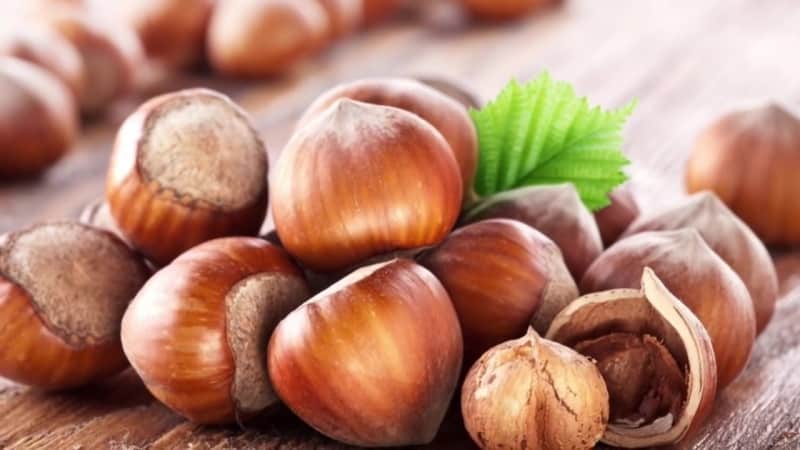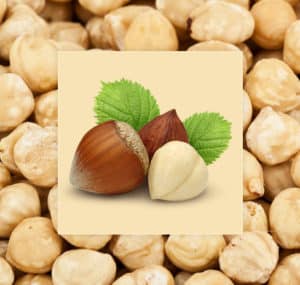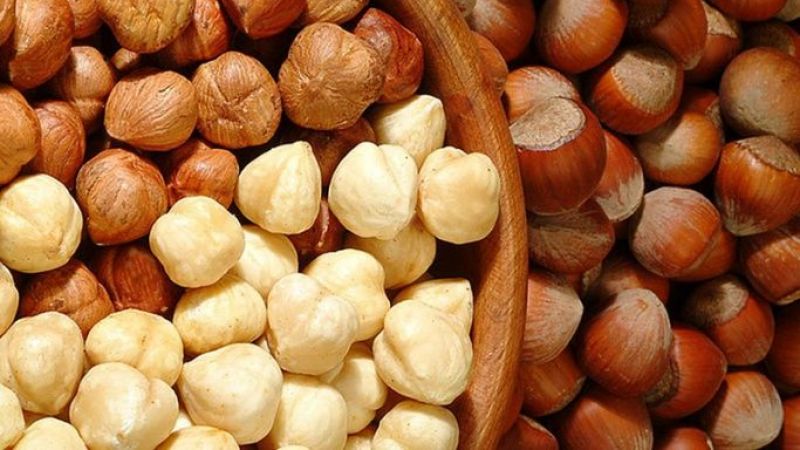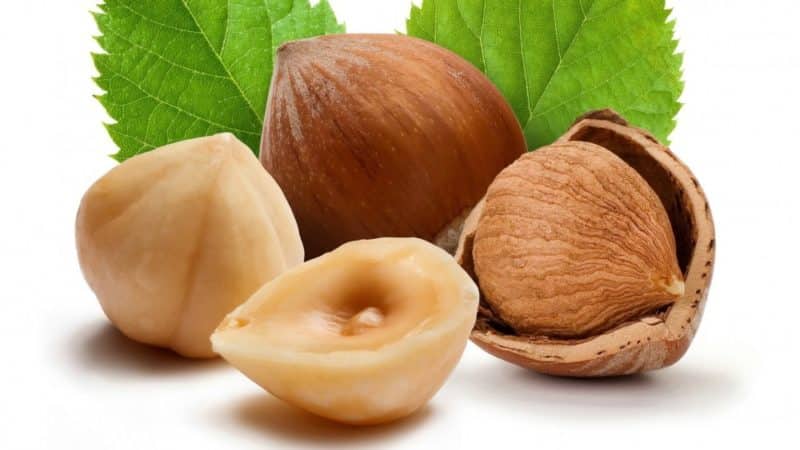How many calories are in hazelnuts (in 100 g and in 1 piece)
Hazelnuts are the fruits of a cultivated variety of hazelnut. Its kernels contain a lot of nutrients: 50-70% vegetable fats and a whole vitamin and mineral complex - C, E, A, B, potassium, calcium, iron, etc. Despite the benefits, fresh nuts have a high calorie content. In order not to harm your figure, it is important to know when to stop and calculate calories correctly.
From the article you will learn how many hazelnuts are in 100 grams, calories in 1 piece and what is the daily intake.
Hazelnut calories

Since ancient times, people have consumed hazel fruits raw, dried and fried. They were widely used in folk medicine to cleanse the liver of toxins, treat anemia, and improve immunity. The calorie content of fresh and roasted nuts differs, and from dried hazelnuts the same as raw.
Per 100 g
Sources on proper nutrition most often provide calculations of calories per 100 g of raw material weight. This quantity contains:
- fats – 67 g;
- proteins – 16 g;
- carbohydrates – 10 g.
100 g of raw hazelnuts contain about 650 kcal. Fried is 20-30 kcal more caloric than fresh. Here is their content in different quantities of hazel fruits without shells:
- per 100 g (50-70 pcs.) – 650 kcal;
- 50 g (about 22 pcs.) – 600 kcal;
- 30 g (12 pcs.) – 360 kcal;
- 20 g – 240 kcal.
The calorie content of fried nuts is higher due to the use of oil during frying. The benefits of such hazelnuts are very doubtful. Doctors do not recommend using it for people with pathologies of the digestive and cardiovascular systems.
How much does one hazelnut weigh without shell?
To independently calculate the calorie content of hazelnuts, you need to know its mass and average calorie content: weight of 1 piece. - on average 1.5-2 g. The pulp of one fruit includes 0.32 g of proteins, 1.34 g of fat, 0.2 g of carbohydrates. Calorie content of hazelnuts: 1 piece – 12-13 kcal.
Let's calculate the energy value of 20 g of hazel. For clarity, we use the proportion:
- 1 g – 12 kcal;
- at 20 – X kcal.
x = 20*12/1, i.e. 200 kcal per 20 g of nuts.
On the shelves there is a large assortment of hazelnuts for every taste: large and medium-sized, in shell and without. The latter are significantly inferior in nutritional value and benefits to the body to nuts in shell. Such kernels are prone to loss of nutritional value, rapid drying and spoilage. Before eating the nut, the shell is cracked, but the brown, dry skin should not be peeled. It just contains vitamins and minerals.
Important! Despite the high calorie content (8 times more than milk chocolate), hazel fruits contain few carbohydrates. Therefore, they can be enjoyed by people on a low-carbohydrate diet. diets, and diabetics.
How many hazelnuts can you eat per day with proper nutrition?

It is recommended to include fresh hazelnuts in the daily diet of a person who adheres to proper nutrition. Being a source of quick energy, hazel fruit will perfectly replace a harmful snack and become an alternative to another afternoon snack. Since the nut has a beneficial effect on brain function, it is indispensable for people engaged in intense mental work: researchers, teachers, schoolchildren and students.
In older people who consume nuts daily, the functioning of the heart and blood vessels improves, aging and destruction of the skeletal system are stopped, and memory lasts longer.
When purchasing a nut, choose the in-shell version. In this form, it retains its smell and taste for a long time and does not lose beneficial features, The nut has a lot of them:
- reduces the risk of developing cancer;
- increases immunity;
- strengthens bones;
- helps build muscle mass;
- stimulates milk production in nursing mothers.
In order for a tasty snack to be beneficial, nutritionists recommend not to exceed the daily intake of the product, equal to 30-40 g. These are average figures calculated for a healthy adult.
The daily rate depends on:
- age;
- gender;
- weight;
- the presence of diseases and characteristics of the body.
Children are recommended to eat no more than 15 g (6 pieces) per day.
Important! Children under 3 years old are prohibited from eating nuts.

During pregnancy and breastfeeding, you can eat hazel fruits after consulting your personal doctor. The maximum norm of hazelnuts for pregnant women is 40 g, for nursing women - less than 20 g (7-9 pieces).
If a person is prone to obesity or has diabetes, it is better to exclude this product from the diet or find a replacement for it. With accelerated weight gain during pregnancy, the same rule is followed. Allergy sufferers and patients suffering from liver and pancreas diseases should not eat nuts.
Roasted hazelnuts are often sold as a snack: salty and sweet, in white and dark chocolate. In this form it tastes even better, but it brings almost no benefits. During heat treatment, moisture evaporates, along with it minerals and vitamins are destroyed.
When purchasing, be sure to check the quality of the product. Questionable-looking nuts are light in weight (in the shell), with an unpleasant odor, and dark in color. Such hazelnuts turn into poison.Spoiled nuts produce toxic compounds called aflatoxins. If they enter the body, they negatively affect the liver, causing serious poisoning.
During seasonal colds, in spring and autumn, prepare a healthy dessert. Peel and chop the kernels, and then mix with good quality honey. It serves as a powerful conductor of nutrients, so the benefits of hazelnuts increase several times. To strengthen the immune system, it is enough to eat 3-4 liters. treats a day.
Read also:
Is it possible to eat almonds on a weight loss diet?
Conclusion
Hazelnuts are a very high-calorie product. The nut can quickly satisfy the feeling of hunger. In terms of composition, it replaces fatty meat, which is why it is so necessary for people on a fast or diet. This natural delicacy is useful for adults, teenagers and pensioners.